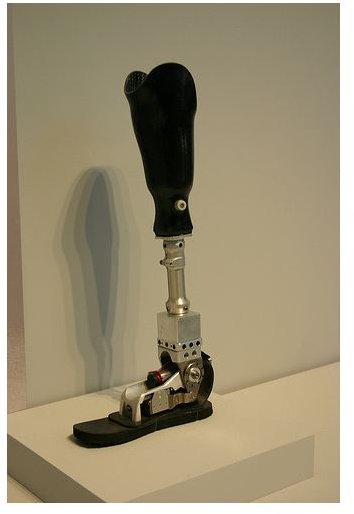The Future of Mechanical Engineering
The Future of Mechanical Engineering: A Vision and a Mission
Mechanical Engineering has been around for centuries and will be, for a long time to come, unless there is a miracle in science that allows humans to deny all laws of mechanics and still allow them to build stuff that can be used. As of now, the situation is unfathomable.
From basic objects like wheels to the ever useful screws and inclined planes, from cars to aeroplanes, from paperclips to ships, from bridges to skyscrapers, they all work under the foundations and principles laid out by the laws of mechanics.
We have seen how machines have made our lives easier. Thanks to mechanical engineering, they have increased the efficiency of the machines that we use and also made it easier to make them. We have seen the wonders of mechanical engineering, but what is the future of mechanical engineering?
The future of mechanical engineering is spread across various emerging streams that hold many promises to make the future a better place to live in.
Some of the promising streams that are the quintessential applications of the future of mechanical engineering are:
- Nano-technology – nano-engineering to be more specific
-
Biomechanics - A promising stream of the future
-
Automobiles and aviation
-
Buildings of the future and urban designing
-
Robotics
… and the list continues, but these are the major areas where the future of mechanical engineering will logically be applied. Now let’s take a tour of what they are and see how they are the future.
Nano-engineering
“Nano” is the word used to measure any object that is measured in scales of 10 to the power of -9. They are microscopic and only electron microscopes are used to see such objects. Creating anything of that microscopic size in itself is a stellar task, let alone applying the principles of mechanical engineering at that level. Nano-engineering is mainly used in the field of research and medicine. It is used to create materials that are not affected by normal factors like weather and corrosion, etc. Materials designed by nano-engineering are lighter and stronger than other materials. The mechanical structure of the materials is changed thereby giving enhanced properties to the materials. A concept using carbon nanotubes by NASA is said to be able to link the surface of the earth and the satellite thereby making a direct connection to a satellite. This is the potential of nano-engineering.
Biomechanics
Bionics is the boon of modern medical science that promises to make the lives of millions better. “Bionic” is the term used to refer to the artificial material or object that mimics the action done by a part of the human body. For example, a bionic arm mimics the actions of a human arm; the bionic leg mimics the human leg. They are created using the principles of biomechanics. Experiments are going on that promise bionic chests and bionic necks. The functions and the operations of the bionics that copy their human counterparts heavily depend on the principles laid by mechanical engineering. Bionics is one area where we can see the wonders of what the future of mechanical engineering has in hold for us and how it is being applied in day-to-day life.
Application of Mechanical Engineering in Bio Mechanics
Image Credits:
https://farm3.static.flickr.com/2170/2481219378_121eaefa72.jpg
Automobiles and Aviation - Mechanical Engineering has helped in creating the fastest cars that are capable of traveling 400+ kph (248 mph) and in the making of the most comfortable vehicles on the planet that are used by millions. The huge aircraft that enable millions every day to reach from one corner of the globe to the other in a matter of hours all are the result of extensive improvement and implementation of mechanical engineering. The strength of the body and the way the automobiles and aircraft are built are results of extensive mechanical engineering and testing. Advancements in mechanical engineering are applied to automobiles to decrease their carbon footprint and make them more eco-friendly and economical while simultaneously giving more efficiency.
Buildings of the Future and Urban Design - Huge structures like the Burj-Khalifa, Taipei 101, and many other tall buildings use mechanical engineering for the structure of the building. Taipei 101 uses mass dampers for stability so that there is a uniform weight distribution so that the buildings don’t get unstable easily. The mechanical structure of the buildings are so adjusted that they are resistant to winds of high speed and natural disasters like earthquakes, storms, etc. The mechanical structure of the building is built such that any tremors at the base of the building are gently damped and the vibrations do not cause any serious effects. Thus mechanical engineering plays a pivotal role in the construction of buildings along with various other sciences.
Robots - Robots like ASIMO can walk, jog, climb stairs, greet people, and do a lot of other things. Robots like ASIMO are the future. For all those actions the robots need to work like humans and mechanical engineering helps in the functioning of the limbs and other body parts. The same principle of biomechanics is used in this area of science. Nano robots are also in the making that are said to be of immense use in the field of medicine, though many oppose the concept as they are also potential weapons of mass destruction and cannot be stopped easily.

Image Credits:
https://upload.wikimedia.org/wikipedia/commons/0/0e/2005_Honda_ASIMO_01.JPG
Though the wonders of mechanics are many, a very few have been listed, so that a rough idea of what the future of mechanical engineering has in hold for humanity, is perceived.
